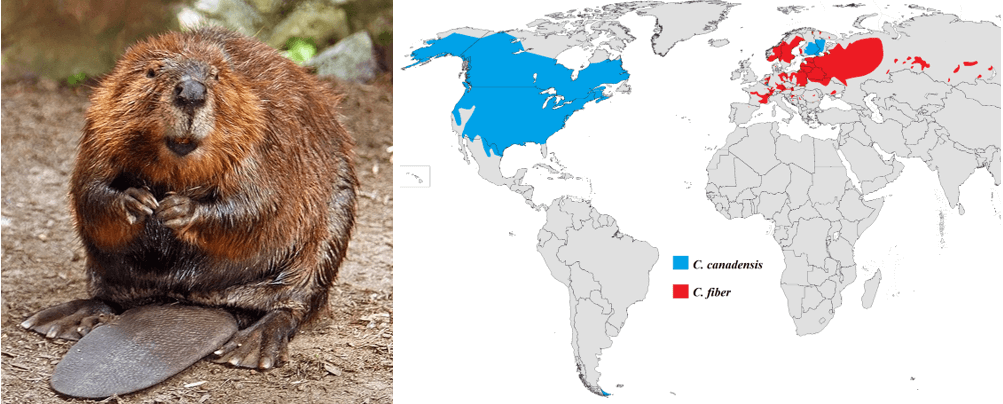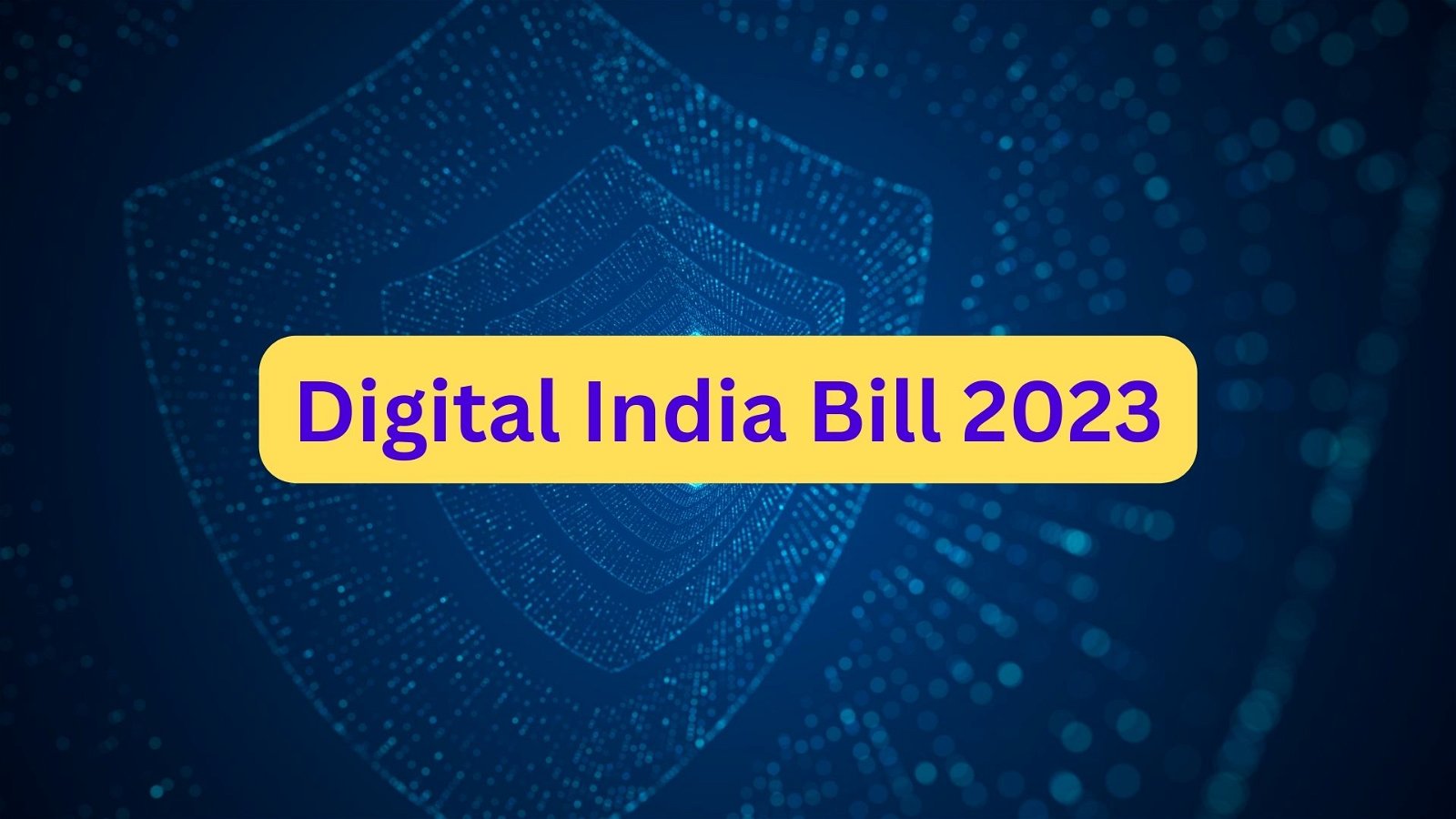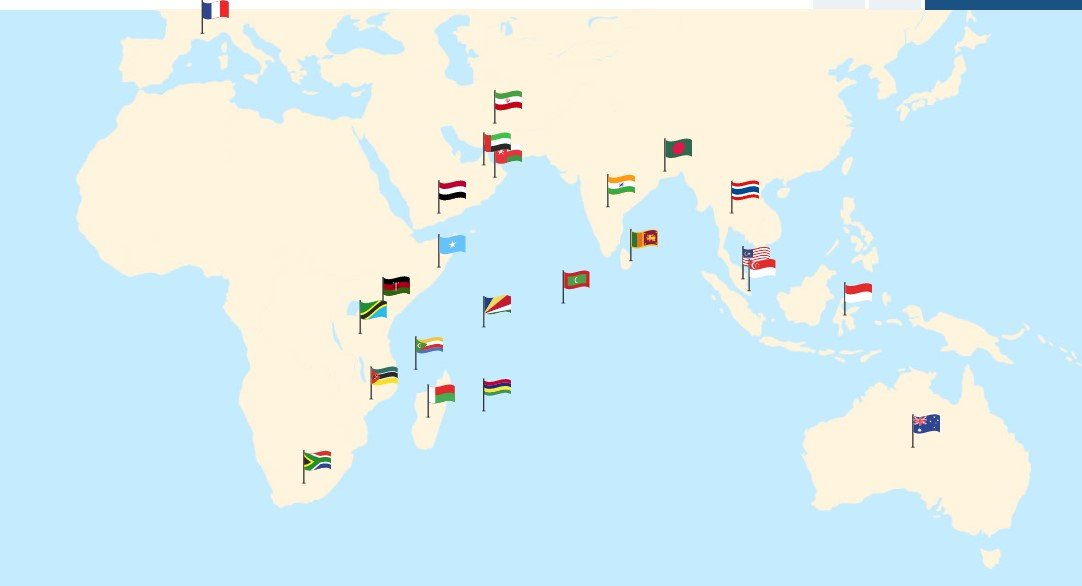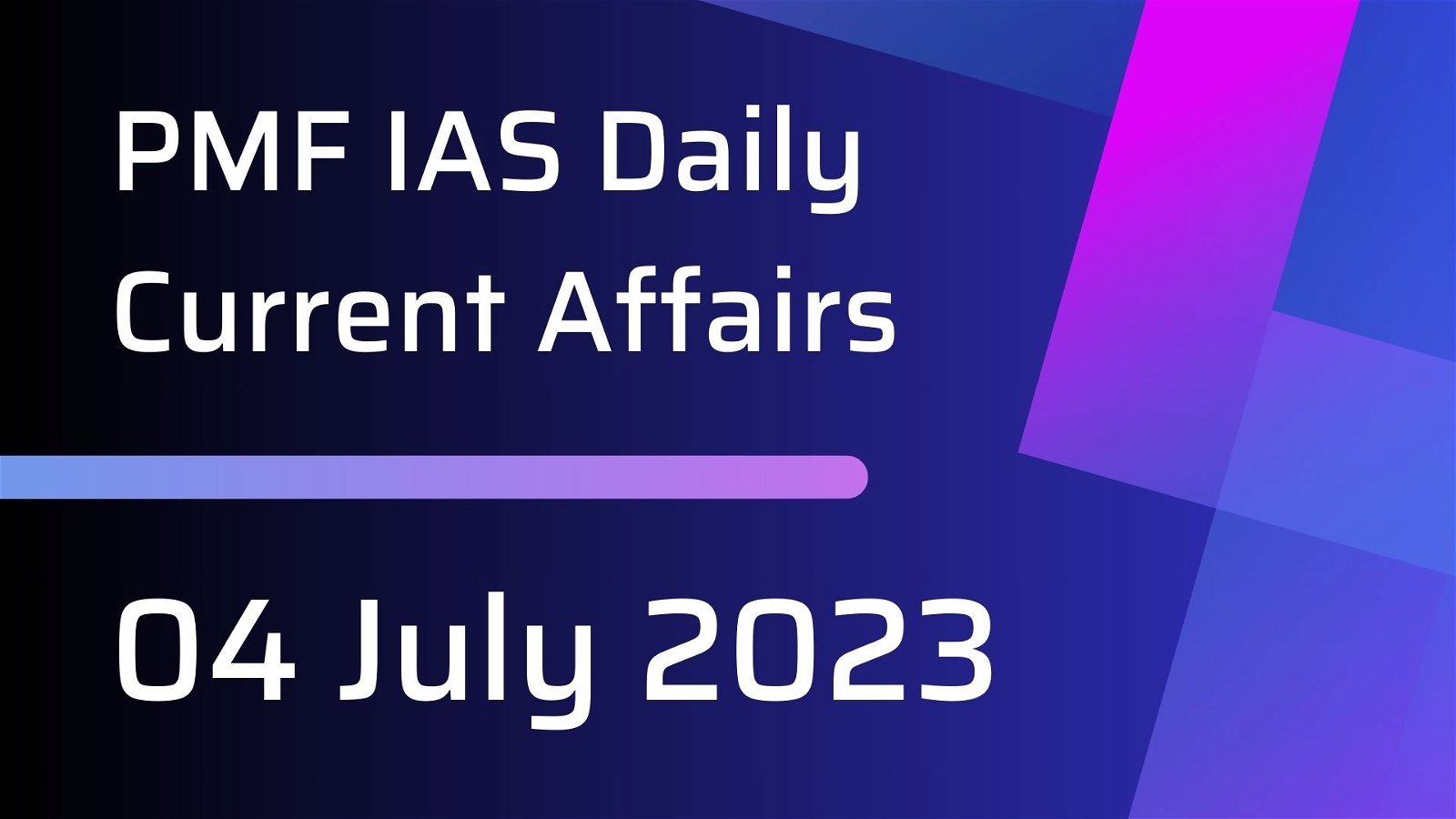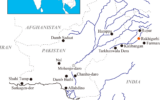
Current Affairs for UPSC Civil Services Exam – June 19, 2024
Subscribers of "Current Affairs" course can Download Daily Current Affairs in PDF/DOC
Subscribe to Never Miss an Important Update! Assured Discounts on New Products!
Must Join PMF IAS Telegram Channel & PMF IAS History Telegram Channel
{GS1 – Geo – HG} Kerala Migration Survey (KMS) 2023 report
- Context (IE): The Kerala Migration Survey (KMS) 2023 report was unveiled at the Lok Kerala Sabha.
- Lok Kerala Sabha is a state government-constituted platform for Keralites abroad and in other states, i.e. non-resident Keralites.
- It is the sixth KMS conducted every five years since 1998. It was prepared by the International Institute of Migration and Development (IIMD) and the Gulati Institute of Finance and Taxation.
- The survey looked at 20,000 households from all 14 districts of Kerala, including rural and urban areas.
- KMS is among the biggest socio-economic surveys ever conducted in Kerala. National Family Health Survey (NFHS-5) sampled only 12,330 households statewide.
Key findings
- Total emigrants increased: The KMS 2023 estimated the number of emigrants from Kerala to be 2.2 million, slightly more than the 2.1 million recorded in 2018.
- Total emigrants returning home increased: The number of emigrants returning home has also increased, from 1.2 million in 2018 to 1.8 million in 2023.
- The decline in emigration to Gulf countries: This is in line with the declining trend seen since 1998 when GCC destinations accounted for 93.8% of Kerala’s emigrants.

Credits: IE
- Rising emigration beyond the Gulf: Preference for destinations beyond the Gulf Cooperation Council (GCC) countries (Bahrain, Kuwait, Oman, Qatar, Saudi Arabia, and the UAE) has grown from 10.8% in 2018 to 19.5% in 2023.
- Rising student emigration: Students constitute 11.3% of total emigrants from Kerala, with overall numbers almost doubling since 2018 — from 129,763 to 250,000.
- Rise in women emigrants: The number and proportion of women emigrants have increased, from 15.8% in 2018 to 19.1% in 2023, with 71.5% of women being graduates as against 34.7% of men.
- 40.5% of women emigrants are in Western countries, compared to only 14.6% of male emigrants.
- Around 51.6% of women emigrants work in the nursing sector.
- Women also make up 45.6% of Kerala’s student migrant population.
- Muslim emigrants: Muslims, who make up 26% of Kerala’s population (according to the 2011 census), make up 41.9% of the state’s emigrants.
- Growing remittances: Rs 216,893 crores in 2023, an increase of 154.9% from Rs 85,092 crores in 2018.
- It amounts to a per capita remittance of Rs 61,118 for the state’s population of 3.55 crores.
- Average remittance per emigrant household also increased to Rs 2.24 lakh in 2023, compared to Rs 96,185 in 2018.
Way forward
- High student migration suggests an urgent need to enhance the state’s educational infrastructure.
- Safe migration pathways for future student emigrants need to be ensured.
- “Brain drain” to “Brain gain”: It is also important to develop new policies that will encourage those studying abroad to return home after acquiring valuable skills.
- Skilling: Given that 76.9% of Kerala’s emigrants are labour emigrants, it is essential to improve and strengthen their skills to help them secure better employment opportunities and pay abroad.
{GS1 – Geo – PG – Geomorphology} Earth’s Inner Core Rotation Slowing Down
- Context (IE): A new study has provided compelling evidence that the Earth’s solid inner core, composed of iron and nickel, began to slow down its rotation compared to the planet’s surface in 2010.
- Since the Earth’s core and most part of the Earth’s interior is physically inaccessible, researchers typically study it by analysing seismic waves generated by earthquakes recorded on seismograms.
Impacts
- The process could potentially change the length of a day on Earth by fractions of a second.
- The inner core‘s spin is influenced by the magnetic field generated in the liquid outer core and gravitational effects within the Earth’s mantle.
- The inner core’s rotation generates Earth’s magnetic field and influences geological processes. Changes in its rotational speed could affect Earth’s magnetic properties and geomagnetic events.
- The recent study says that the inner core is reversing and backtracking relative to the surface, rotating slower than the mantle for the first time in about 40 years.

Credits: USC
Connection to Climate Change and Earth’s Rotation
- A separate study (Nature Journal) found that climate change-driven melting of ice in Greenland and Antarctica was affecting global timekeeping by slowing down Earth’s rotation.
- The liquid core was slowing down, causing the solid Earth to rotate faster to counterbalance the effect, resulting in fewer ‘leap seconds’ being needed to be added to the Coordinated Universal Time (UTC).
|
Coordinated Universal Time (UTC)
- UTC is the primary time standard by which the world regulates clocks and time. It is based on precise atomic clocks and is maintained by the International Bureau of Weights and Measures (BIPM).
- UTC is designed to approximate the mean solar time at 0° longitude (the prime meridian), which is the basis for civil time and time zones.
Leap Seconds
- The Earth’s rotation is gradually slowing due to tidal forces from the Moon and Sun, as well as changes in Earth’s structure and climate. Consequently, the length of a day based on Earth’s rotation increasingly diverges from the day defined by atomic clocks.
- To account for this divergence and keep UTC in sync with the Earth’s rotation, leap seconds are added.
- A leap second is a one-second adjustment that is inserted as a “stop” second into UTC to keep it aligned with the Earth’s rotation. It is added on either June 30th or December 31st, as required.
{GS2 – Governance – Issues} SIM cards issuance
- Context (IE): The Punjab and Haryana High Court urged the Centre to intensify efforts in monitoring and regulating the issuance of multiple prepaid SIM cards to individuals amid rising online frauds.
- In Sumit Nandwani’s case, Punjab and Haryana HC suggested restricting one SIM card per individual.
Existing provisions
- In “State (NCT of Delhi) vs. Navjot Sandhu alias Afsan Guru”, the Supreme Court restricted the sale of SIM cards without identity verification.
- The Department of Telecommunications (DoT) under the Ministry of Communications then issued notifications in 2006 and 2009 for banning the sale of pre-activated SIM cards.
|
- Avishek Goenka vs. Union of India (2012) case: The petitioner highlighted that pre-activated SIM cards are still being sold, necessitating government action.
- Telecom Ministry issued a circular that an individual category customer (i.e., local, outstation, and foreign) can subscribe to “a maximum of nine mobile connections” in his or her name across all telecom service providers and Licensed Service Areas (LSAs).
- The limit was set at six connections for people in Jammu & Kashmir, Assam, and the Northeast LSAs.
- Declaration from individuals about the connections already held was also mandated.
Linking AADHAR with mobile phones
- KS Puttaswamy vs. Union of India (2018): The fundamental right to privacy was upheld. However, in this case, linking Aadhar with SIM cards is not mandatory.
- Section 3(7) of the Telecommunications Act 2023: It states that entity issuing SIM cards must identify the person to whom the service is being provided using any verifiable biometric-based identification.
- Since the only biometric-based identification in India is Aadhar, one can invariably assume that Aadhar is now mandatory for accessing any telecom services, including purchasing a SIM card.
SIM (Subscriber Identity Module)
- It is an integrated circuit (IC) intended to securely store an international mobile subscriber identity (IMSI) number and its related key.
- These are used to identify and authenticate subscribers on mobile telephone devices (such as mobile phones and laptops).
- SIM cards are also used in satellite phones, smart watches, computers, or cameras.
Also, refer to the article on eSIM.
{GS2 – MoA – Initiatives} Krishi Sakhis
- Context (PIB): The Prime Minister granted certificates to more than 30,000 women from Self Help Groups (SHGs) as Krishi Sakhis.
- This certification course aligns with the objectives of the ‘Lakhpati Didi’ Program.
- The Krishi Sakhi Convergence Program (KSCP) aims to transform rural India by empowering rural women as Krishi Sakhi by imparting training and certification of Krishi Sakhi as Para-extension Workers.
- The KSCP is a key component of the broader ‘Lakhpati Didi’ program.
- This initiative aims to create three crore Lakhpati Didis by training and certifying women as Krishi Sakhis, thereby enhancing their agricultural skills and providing new employment opportunities.
- This initiative, supported by the Ministry of Agriculture and Farmers Welfare and the Ministry of Rural Development, aims to improve rural livelihoods and standards of living.
- Krishi Sakhi is envisaged to create awareness and capacity building in the community regarding agricultural activities and facilitate the aggregation and marketing of agricultural products.
- Krishi Sakhis are chosen as agriculture para-extension workers because they are trusted community resource persons and experienced farmers. Their deep roots in farming communities ensure they are welcomed and respected.
The kind of training provided
- Agro Ecological Practices from land preparation to harvest
- Organising Farmer Field schools
- Seed banks establishment and management
- Soil health, soil and moisture conservation practices
- Integrated Farming Systems
- Basics of Livestock Management
- Preparation and use of Bio inputs and establishment of Bio inputs shops
- Basic communication skills
{GS2 – Polity – IC – Parliament} Appointment of Pro-Tem Speaker
- Context (IE): Senior Congress leader K Suresh, the most senior member of the Lok Sabha, is expected to be appointed Pro-Tem Speaker for the first session of the 18th Lok Sabha.
Legal Provisions Related to the Pro-Tem Speaker
- The Indian Constitution does not specifically mention the post of the Pro-Tem Speaker.
- The ‘Handbook on the Working of the Ministry of Parliamentary Affairs’ provides guidelines for the appointment and swearing-in of the Pro-Tem Speaker.
- Article 94 of the Constitution states that the Speaker shall not vacate the office until immediately before the first meeting of the new Lok Sabha after a dissolution.
- Article 99 mandates that every Member of Parliament must make and subscribe to an oath or affirmation before taking a seat in the House.
Appointment Process and Functions of Pro-Tem Speaker
- The President appoints the senior member of the Lok Sabha (in terms of the number of years as a member) as the Pro-Tem Speaker to perform the duties of the Speaker until a new Speaker is elected.
- The Legislative I Section of the Government of India compiles a list of the seniormost Lok Sabha members, which is submitted to the Minister of Parliamentary Affairs or the Prime Minister.
- With the members’ consent, the Minister then seeks the President’s approval for their appointments.
- The President administers the oath to the Pro-Tem Speaker, who then administers the oath to three members appointed by the President.
- Assisted by these members, the Pro-Tem Speaker then administers the oath to the newly elected MPs.
- After the swearing-in, the Pro-Tem Speaker presides until the new Speaker is elected.
- The election, overseen by the Pro-Tem Speaker, is conducted through a motion moved by the PM.
{GS2 – Social Sector – Health – Diseases} Truenat platform
- Context (TH): India-made TB diagnostics tech wins acclaim at the World Health Assembly.
- Developed by Goa-based Molbio, a point-of-care molecular diagnostics company, Truenat was first launched in 2017.
- It is a real-time quantitative micro-PCR system. It is a portable, battery-operated machine that can be deployed at labs, health centres, and in the field.
- It is a rapid molecular test for the diagnosis of pulmonary, extrapulmonary & rifampicin-resistant TB.
- Truenat delivers results from samples in less than an hour and can test for over 40 diseases.
- TrueNat is used at over 7,000 primary health centres and community health centres under the National TB Elimination Programme and roughly 1,500 private labs in the country.
- Early diagnosis and treatment are crucial to combating TB, which kills an estimated 480,000 Indians every year, or over 1,400 patients every day.
- The WHO reports over 10 million new cases of TB every year, and India alone accounts for 27% of the global TB burden.
Also refer to other articles on Tuberculosis.
{GS3 – IE – Trade} Global Economic Decoupling
- Context (TH): The USA’s recent tariffs on Chinese goods have revived concerns about a new era of economic decoupling between the US and China.
- Europe is also considering a ‘united front’ to counter China’s pursuit of coercive economic practices.
USA’s Approach
- The US trade approach with China is increasingly driven by national security concerns, as it prioritises domestic politics and union interests over economic benefits.
- The recent tariff increase on Chinese electric vehicles aims to support American automakers and the United Auto Workers union, which also reflects the fears of China’s growing dominance in the EV market.
- Tariffs on medical devices from China aim to reduce US dependence on Chinese manufacturing.
Long-Term Effects of Protectionism
- Tit-for-tat tariffs exacerbate protectionism, potentially prompting other countries to follow suit.
- Import restrictions on Chinese clean energy products could delay global green transition targets.
- China’s slowing growth and rising household debts will impact Western multinationals and resource-rich countries like Australia and Brazil, reducing earnings and commodity prices.
- The EU’s de-risking approach to critical raw minerals trade with China may lead Beijing to tighten supply chain control, potentially allowing a mineral-rich bloc to dictate green trade terms.
- Southeast Asia benefits from shifting production and investment but remains reliant on China for technology and investment. Stricter US rules of origin could hinder its prospects as a major supplier.
- India, with its growing consumer market, may benefit from decoupling, but gains and transition time are uncertain due to its manufacturing lag and economic ties with China.
- The escalation cycle endangers the liberal international order, worsened by deliberate distancing from the WTO and the paralysis of its adjudicatory process.
|
Impact on Addressing Climate Change Problems
- China accounts for 98% of the EU’s supply of rare earth elements and 60% of global mined production.
- These elements are essential for technologies like electric vehicles, wind turbines, and solar panels that are critical for reducing carbon emissions and transitioning to renewable energy sources.
- Limiting access to Chinese solar panels could hamper the deployment of solar energy.
- A study by the University of California warns that a Western decoupling from cooperation with China on clean-energy technologies could have a global impact on efforts to mitigate climate change, with the “decoupling ‘cure’ likely to be worse than the integration ‘disease’.”
|
{GS3 – S&T – Defence} India’s Nuclear Arsenal Grows
- Context (TH): According to the Stockholm International Peace Research Institute (SIPRI), India’s nuclear arsenal reached 172 warheads in 2023, slightly surpassing Pakistan’s 170 warheads.
- China maintains a larger nuclear arsenal (~500 warheads), with some believed to be on high alert.
Findings on India
- India is enhancing its nuclear triad with the development of nuclear-powered ballistic missile submarines (SSBNs). The third SSBN, S4, launched in 2021, and a fourth is slated for a 2024 launch.
- These new submarines are significantly larger, indicating increased capability.
- India declared its nuclear triad operational in 2019 with the first SSBN, INS Arihant.
- India is developing long-range missiles, enabling it to target all of China, in addition to Pakistan.
Multiple Warhead Capability
|
- The SIPRI report noted that India, Pakistan, and North Korea are developing the capability to deploy multiple warheads on ballistic missiles, joining Russia, France, the UK, the US, and recently, China.
- This advancement could rapidly increase deployed warheads and threaten more targets.
|
Nuclear Diplomacy
- The USA and Russia hold the vast majority of the world’s nuclear warheads, with around 5,000 each.
- India was one of the first countries to propose a nuclear test ban treaty and a halt to the production of materials for nuclear weapons.
- India signed and ratified the Partial Test Ban Treaty in 1963.
- The Comprehensive Nuclear-Test-Ban Treaty (CTBT), though not yet in force, remains a key instrument in the UN’s efforts to curb nuclear proliferation.
- The suspension of the New START treaty between Russia and the USA and ongoing challenges in arms control highlight the fragile state of nuclear diplomacy.
- The discriminatory nature of the Nuclear Non-Proliferation Treaty (NPT) is seen as a hurdle.
- NATO’s nuclear sharing involves US nuclear bombs in Europe, delivered by member states’ aircraft during conflicts, distributing nuclear deterrence risks and responsibilities within the alliance.
{GS3 – S&T – IPR} Tamil Nadu Seeks GI Tag for Seven Agricultural Products
- Context (TH): The Tamil Nadu State Agricultural Marketing Board has filed applications for Geographical Indication (GI) tags for seven agricultural products from the state.
- The application process was facilitated by the NABARD-Madurai Agribusiness Incubation Forum (MABIF).
Products seeking GI Tag
- Senkanthal Seed: The seed of the Senkanthal flower (Gloriosa superba), the state flower of Tamil Nadu, holds a special place in Tamil literature, art, and culture.
- Kolli Hills Pepper: Obtained from the perennial climbing vine Piper nigrum, this pepper is known for its quality and is one of the earliest known spices produced in India.
- Ayyampalayam Nettai Thennai (Coconut): Renowned for its towering stature, exceptional sweetness, high oil content, and resilience to drought and disease.
- Tirunelveli Senna Leaf: A shrubby plant known for its medicinal properties, particularly its use as a laxative and in treating skin diseases.
- Sathyamangalam Red Banana: This dwarf banana variety is renowned for its unique flavour, aroma, and colour, which are attributed to the soil and climate of the Satyamangalam region.
- Urigam Puli (Tamarind): It is a large-sized tamarind variety with a distinct sweet-and-sour taste. It is cultivated primarily in the Urigam village of Krishnagiri district in Tamil Nadu.
- Odaipatti Seedless Grapes: It is seedless and suitability for both consumption and processing.
{GS3 – S&T – Space} LVM3 M3 re-enters Earth’s atmosphere
- Context (IE): ISRO announced that the cryogenic upper stage of the LVM3 M3/OneWeb India- 2 mission has re-entered the Earth’s atmosphere.
- In its sixth consecutive successful flight of LVM3, the vehicle placed 36 satellites belonging to the UK-headquartered OneWeb in their intended orbit.
- Only certain elements like gas bottles, nozzles, and tanks, which comprise materials of very high melting points, were expected to survive the aerothermal heating during the re-entry for this rocket body.
- It complied with international guidelines, such as UN space debris mitigation guidelines, as it was disposed of through natural orbital decay within two years of the orbital injection.
- It also complied with the directives of India’s Debris Free Space Missions (DFSM) initiative.
|
{GS3 – S&T – Space} Pre-Incubation Entrepreneurship (PIE) development programme
- Context (TH): The Indian National Space Promotion and Authorisation Centre (IN-SPACe) has launched the Pre-Incubation Entrepreneurship (PIE) development programme.
- It is designed to boost innovation and entrepreneurship among individuals and early-stage startups.
- Objective: It aims to transform ideas into prototypes, develop entrepreneurial and business skills, catalyse innovation, advance scientific discoveries, and generate socio-economic benefits.
- Eligibility:
- The applicants must be Indian citizens who are graduates or graduating in 2024 and should not have received any grants, funding, or monetary support from private or government schemes.
- Start-ups registered with the Department for Promotion of Industry and Internal Trade (DPIIT) on or after July 1, 2022, are categorised as early-stage start-ups, and will be liable to receive the grant.
- Duration: It consists of three phases: Ideate, Innovate, and Demonstrate, spanning 21 months.
{GS3 – S&T – Tech} New Catalyst for cheaper biodiesel
- Context (TH): Scientists from Assam, Odisha, China, and UK have developed a water-repellent catalyst, that can cut the cost of producing “environmentally benign” biodiesel substantially.
Superhydrophobic catalysts imitate the anti-wetting or water-repulsing properties of natural surfaces such as lotus leaves.
|
- This catalyst stands out because of its unmatched robustness; it can withstand the water by-product during biodiesel production.
- Thus, it can be reused multiple times, making the catalytic process more efficient and cost-effective.
- It is derived from biomass (cellulose) and is ecologically benign, abundant, and highly affordable.
- At present, the cost of biodiesel in India is about ₹100 or UD$1.2 per litre. Using the superhydrophobic activated carbon catalyst can bring down the cost to about 37 cents per litre.
{Prelims – Bio – Diseases} Streptococcal toxic shock syndrome (STSS)
- Context (IE): Cases of a rare but lethal human flesh-eating bacterial infection have gripped Japan.
- Data from the National Institute of Infectious Diseases reveals that Japan has already recorded nearly 1,000 cases this year alone, surpassing last year’s numbers.
About STSS
- STSS is a severe infection caused by Group A Streptococcus (GAS) bacteria. STSS is capable of killing within just 48 hours of infection.
- It progresses rapidly, leading to high fever, severe pain, low blood pressure, and potential organ failure.
|
- After the easing of COVID-19 restrictions, there has been a general rise in GAS infections. It is particularly affecting people over 50, who are more vulnerable to severe outcomes.
- Group A Streptococcus bacteria produce toxins that trigger a hyper-inflammatory response in the body.
- These toxins lead to widespread tissue damage and severe inflammation, resulting in rapid tissue necrosis (flesh-eating), extreme pain, and shock.
- The bacteria can swiftly enter the bloodstream and organs, causing multi-organ failure in a short period.
{Prelims – Envi – Species} Filoboletus manipularis
- Context (IE): Researchers have discovered a rare species of bioluminescent mushrooms in Kasargod that emit a brilliant, otherworldly green light in the darkness of night.

Credit: Flickr
- The fungi, scientifically known as Filoboletus manipularis, are capable of producing their own light through a biochemical process in their cells.
- Bioluminescence in these mushrooms is attributed to a chemical reaction involving luciferin (a pigment) and luciferase (an enzyme), substances that produce light when combined with oxygen.
- The natural glow emitted by these mushrooms is believed to attract insects, facilitating the dispersal of spores and contributing to the fungi’s reproductive cycle.
- They thrive in tropical, humid environments, typically found in dense forests with abundant decaying organic matter, like fallen trees and leaves, as it provides the nutrients and conditions necessary for their growth and their unique glowing property.
- These mushrooms are not fit for consumption as the chemicals that make them glow could be toxic, leading to severe gastrointestinal issues.
{Prelims – In News} Digital Agriculture Mission
- Context (IE): The Centre will announce major initiatives for the rural and agriculture sector, including the Rs 2,800 crore Digital Agriculture Mission, as part of its first 100-day agenda.
About Digital Agriculture Mission
- The mission aims to create a nationwide farmers registry, where every farmer will be assigned a unique identification number (already begun in states like Uttar Pradesh and Maharashtra).
- The unique ID will enable farmers to access various government schemes, such as PM-Kisan and Fasal Bima Yojana, as well as financial services like farm loans and insurance.
- The mission envisions a crop sown registry, which will maintain records of crops sown by farmers on their land. This registry will aid in better planning and estimation of crop production.
- The mission also aims to georeference village maps, providing spatial data for better planning and implementation of agricultural initiatives.
{Prelims – In News} eMigrate Portal
- Context (TH): MEA and SBI have signed an MoU to provide an additional digital payment service of the bank through its payment gateway SBIePay to users of the eMigrate portal.
- The agreement would “further facilitate and enhance the ambit of safe and legal migration of Indian migrant workers.
- The eMigrate Portal was launched in 2014.
- It assists Indian workers (mainly blue-collar workers) going to Emigration Check Countries (ECR) for employment by making the emigration process online and transparent.
- It brings foreign employers, registered recruiting agents and insurance companies issuing the Pravasi Bhartiya Bima yojana on a common platform to facilitate seamless, safe and legal migration.
- It also allows voluntary registration of ECNR (Emigration Check Not Required) passport holders.
{Prelims – In News} Environmental flows (E-flows) Monitoring System
- Context (TH): The Jal Shakti Ministry launched an e-flow ecological monitoring system that allows real-time monitoring of river quality.
|
- The Environmental flows (E-flows) Monitoring System has been developed by the National Mission for Clean Ganga, an arm of the Jal Shakti Ministry.
- It allows real-time analysis of the water quality of the Ganga, Yamuna, and their tributaries.
- It also allows monitoring of the Namami Gange programme activities at the central level.
{Prelims – S&T – Defence} Exercise Tarang Shakti-2024
- Context (TH): The Indian Air Force’s 1st multinational air exercise, Tarang Shakti-2024, will be held in August.
- Objective: The plan is to invite friendly foreign countries with whom the IAF interacts regularly and has a certain degree of interoperability.
- The exercise is now scheduled to be held in two phases. 1st to be held in southern and the 2nd will be in the western sector.
Also, learn about the Red Flag Exercise.






![PMF IAS Environment for UPSC 2022-23 [paperback] PMF IAS [Nov 30, 2021]…](https://pmfias.b-cdn.net/wp-content/uploads/2024/04/pmfiasenvironmentforupsc2022-23paperbackpmfiasnov302021.jpg)

